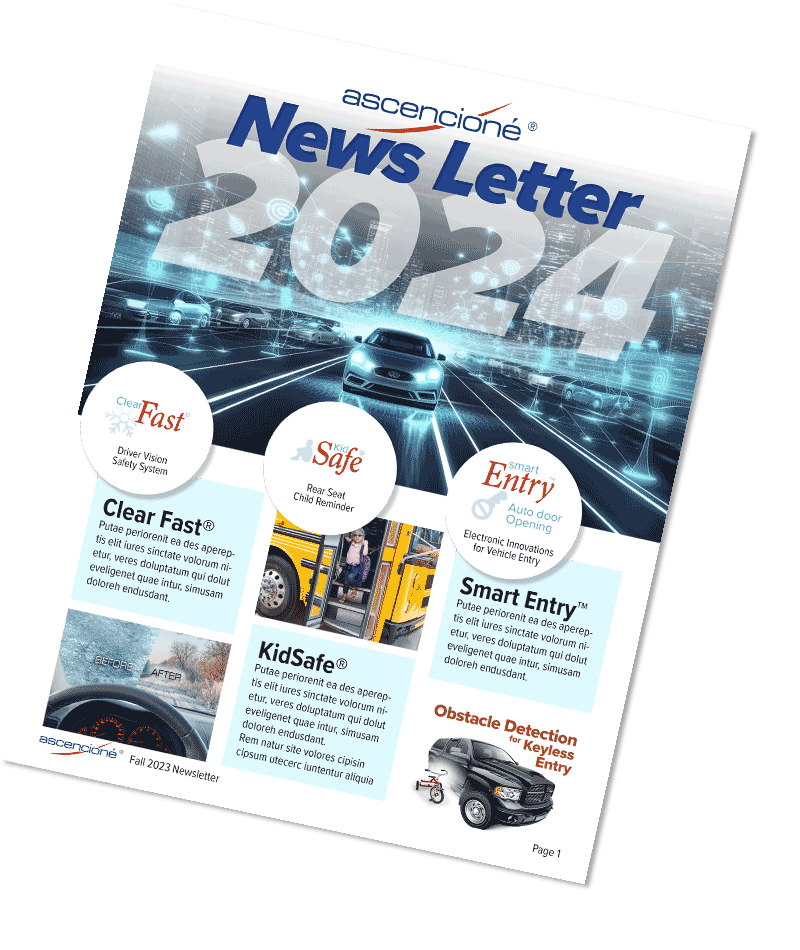Sensors in cars – vehicles – the Automotive industry
Table of Contents
Automotive Car Sensor
Car Sensor List in 2025 – different types!
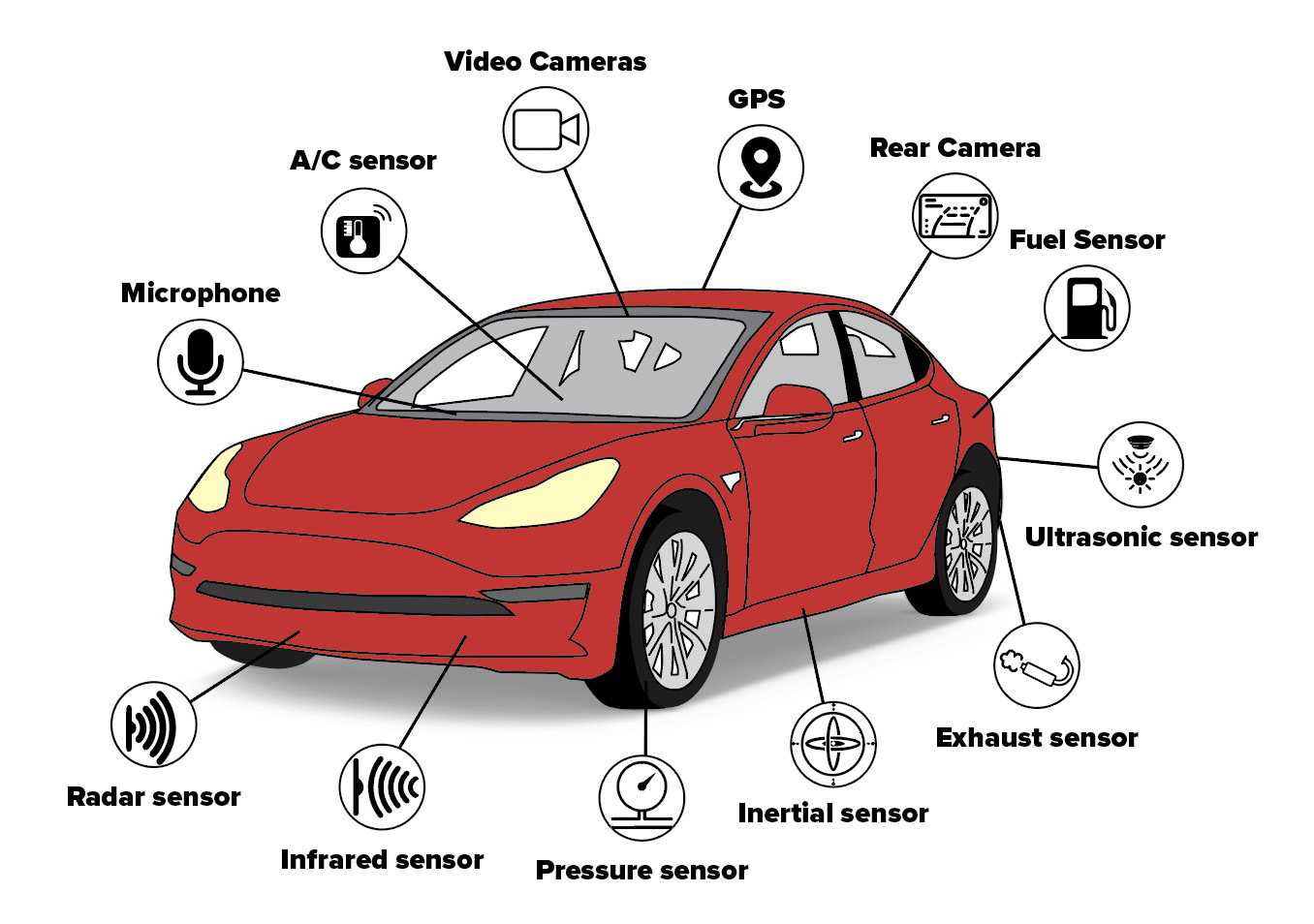
In 2025, Automotive sensors have become integral components of modern vehicles, pivotal in monitoring and managing various aspects of vehicle operation. These sensors, which encompass a diverse range of functions, contribute to enhancing performance, safety, and efficiency. Whether it’s engine optimization, safety systems, or driver assistance features, sensors have transformed the automotive landscape. This article thoroughly explores the different types of car sensors, explaining their importance and effects.
Automotive Sensors in cars for safety
Engine Sensors: Engine sensors optimize combustion by regulating the air-fuel mixture. The Mass Air Flow (MAF) sensor measures the air entering the engine, ensuring precise fuel injection. Oxygen (O2) sensors monitor the exhaust gases to maintain the proper air-fuel ratio, resulting in optimal combustion.
Transmission sensors, including Transmission Range and Speed sensors, guarantee smooth gear shifting and precise transmission control.
Safety Sensors: Safety sensors are essential for advanced driver-assistance systems (ADAS). Radar, lidar, cameras, and ultrasonic sensors enable features like adaptive cruise control, collision/crash avoidance, and parking assistance.
Other Types of Sensors: Car sensors encompass many functions, including measuring temperature, pressure, distance, etc. For instance, Tire Pressure Monitoring System (TPMS) sensors ensure proper tire pressure and proximity sensor for car aid in parking assistance and automotive occupant sensing systems.
Significance of Safety Sensors
Safety sensors are pivotal for mitigating risks and enhancing occupant protection. Airbag deployment systems use impact sensors to detect sudden slowing down, deploying airbags to cushion occupants during collisions – crash. Moreover, ADAS uses different sensors to offer immediate information on surroundings and potential dangers. This enables features such as lane departure warning and adaptive cruise control.
Car sensors collect live data, offering valuable insights into vehicle performance, environmental conditions, and potential hazards. They serve as the car’s senses, enabling informed decisions, improving safety, and enhancing efficiency on the road.
How many sensors in cars?
Types of Sensors in a Car
- Engine and Powertrain Sensors: Monitor engine parameters like temperature, pressure, and airflow.
- Safety Sensors: Include airbag sensors, seatbelt sensors, and collision detection sensors.
- Driver Assistance Sensors: Such as cameras, radar, and LiDAR for features like adaptive cruise control, lane-keeping assist, and automatic emergency braking.
- Comfort and Convenience Sensors: Include climate control sensors, occupancy sensors, and sensors for infotainment systems.
Electronic Auto Sensors:
Electronic sensors are a subset of the total number of sensors in a car and are responsible for a wide range of functions. Almost all the sensors mentioned above are electronic in nature, as they typically rely on electronic circuits to detect and measure various parameters. Therefore, if a car has around 60 to 100 sensors, most, if not all, of these sensors will be electronic.
To summarize:
- Total sensors in a car: Typically 60 to 100+
- Electronic sensors in a car: The majority of the total sensors, so approximately 60 to 100+
In modern cars, various sensors play a vital role in monitoring vehicle performance, safety, and efficiency. Automakers strategically place these sensors throughout the vehicle. The sensors drive advanced control systems and enable real-time data analysis, enhancing operation for an improved driving experience.
Pressure, temperature, and humidity sensors are all used. They monitor tire pressure, engine coolant temperature, and cabin climate.
All these sensors collect data processed by the car’s electronic control unit (ECU). Adjusting various parameters for optimal engine performance, fuel efficiency, and emissions control. Contributing to safety features such as airbag deployment upon impact detection and electronic stability control during challenging driving conditions.
In summary, integrating multiple sensors in modern cars represents advancements in automotive engineering. This enabling intelligent systems that enhance performance, safety, and driving efficiency. The coordination between these sensors and the ECU forms a sophisticated network. The network ensures smooth interaction design between driver, vehicle, and road.
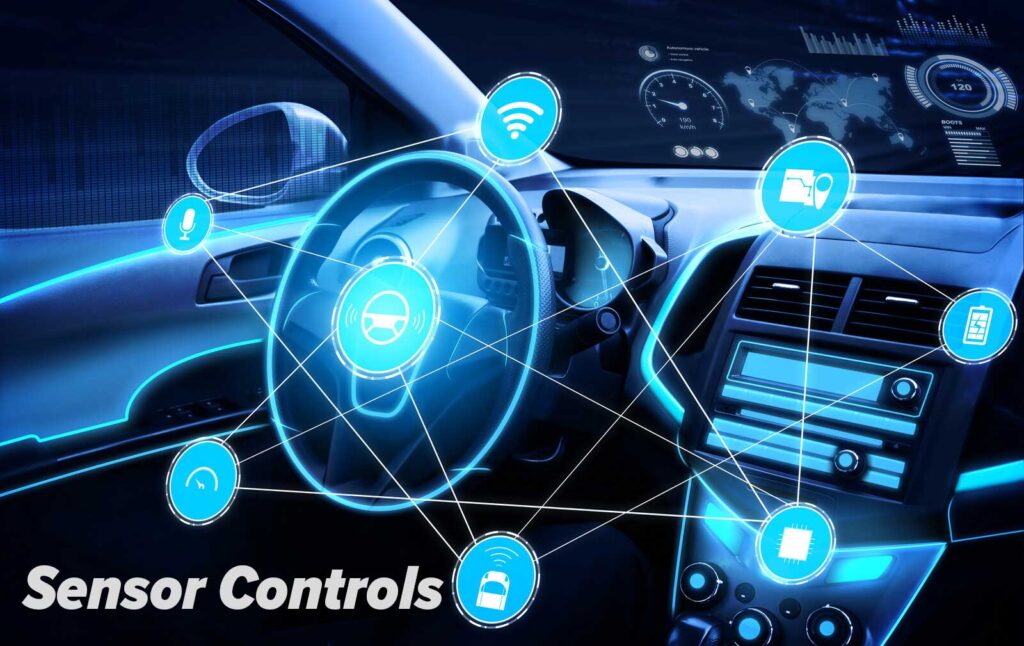
How do car sensors work?
Car sensors gather critical data and send it to the vehicle’s Electronic Control Unit (ECU). Engine sensors, like Mass Air Flow (MAF) and Oxygen (O2), optimize the air-fuel mixture for efficient combustion. Transmission sensors ensure smooth gear shifting and prevent errors.
Safety sensors, such as radar, lidar, cameras, and ultrasonic sensors, help with several things:
- adaptive cruise control
- collision – Crash avoidance
- lane detection
- parking assistance
- improving overall driving safety
These sensors show how technology and engineering work together in modern cars, enhancing performance and safety on the roads.Sensor count. How many Automobile sensors

Car Sensors List
Here, you’ll find a list of car sensors we’ve worked on previously, along with brief project descriptions. We cover various sensor types in our expertise and actively engage in diverse sensor-related projects. Ascencioné® has yet to research and apply some sensors. We may address each in the future.
Our dedication to innovation and sensor technology inspires us. We explore and develop a variety of sensors to meet the changing demands of the automotive industry. These sensors contribute to electronic hand controls for cars.
Various types of auto sensors
Various applications, including automotive, utilize these sensors beyond capacitive and radar sensors.
♦ Types of sensors in this color:♦♦ represents products we’ve already developed.
♦ Types of sensors in this color ♦♦represent sensors that we’ve yet to develop.
ABS Sensor (Anti-lock Braking System)
Wheel speed sensors are used to detect individual wheel rotation speed. Optical Apes Air bag pressure sensor
Acceleration Pedal Sensor
Measures the position or movement of the gas pedal.
The Smart Pedal® is an advanced pedal. Offering multiple output signals based on pressure for quick vehicle function activation. It replaces brake lamp switches with outputs like stop lamps and active suspension.
It adapts and is cost-effective, equipped with force, pressure, and movement sensors. Ensuring swift and reliable responses to pedal pressure.
Accelerometer Sensor
Used for measuring acceleration forces.
Air Conditioning Pressure Sensor
Measures the pressure in the air conditioning system for proper operation.
Airbag Sensor
Crash sensors or accelerometers detect sudden slow down or impact.
Ambient Temperature Sensor
Measures the surrounding temperature.
Auto Trailer Hook-up System
ATS Hook up a trailer automatically
The Autonomous Reversing and Trailer Hitching Assist for Ford Trucks is innovative. It includes full autonomous and semi-autonomous modes.
This feature enhances exterior convenience, ensuring perfect trailer alignment with hands-free control over steering, brakes, and throttle.
It outperforms existing NAV / Backup cameras. Auto Trailer Hook-up System appeals to a wide range of truck variants. This makes it a compelling reason to choose Ford Trucks over competitors.
Barometric Pressure Sensor
Measures atmospheric pressure to assist in engine management.
Battery Temperature Sensor
Monitors the temperature of the vehicle battery.
Blind Spot Detection Sensor
Utilizes radar or ultrasonic sensors to detect vehicles in the blind spot and provide warnings.
Brake Fluid Level Sensor
Monitors the level of brake fluid in the reservoir.
Catalytic Converter Temperature Sensor
Measures the temperature of the catalytic converter for emissions control.
Camshaft Position Sensor
Detects the position of the camshaft for precise engine timing.
Computer Interface Display
Liquid crystal displays replace analog gauges to give drivers more information in a changeable way.
Touching the future – Capacitive touch screens for Chrysler 200C concept car. With a large, odd shaped display wrapped to fit the dashboard’s contours and responding to touch sensation inputs. CRT Systems, LCD systems, VFD systems, and El Panel
Collision – Crash Detection Sensor
Combines various sensors like radar, LiDAR, or cameras to detect and warn of potential crashes.
Coolant Temperature Sensor
Measures the temperature of the engine coolant. Military projects that reports the temperature to ECM or BCM.
Crankshaft Position Sensor
Monitors the position and rotational speed of the crankshaft for engine timing.
Crash Sensor
Detects sudden deceleration or impact to trigger safety measures.
Distance Sensor
Different sensors, such as ultrasonic, LiDAR, or radar, measure distance for parking assistance or collision avoidance systems.
Door Position Sensor
Detects the position or status of the vehicle doors for central locking or security systems.
The car door opener position sensor is critical in automotive systems, integral to features like Smart Entry™. This sensor accurately detects obstacles and door status, ensuring the proper functioning of the keyless entry car system. As manufacturers develop advanced keyless entry systems for cars, the door position sensor remains essential for optimizing user experiences, boosting sales, and enhancing security.
Engine Knock Sensor
Detects abnormal vibrations or knocking in the engine to prevent damage.
Exhaust Gas Recirculation (EGR) Position Sensor
Measures the position of the EGR valve for emissions control.
Fuel Level Sensor
Monitors the fuel level in the fuel tank. Efficient fuel management with our Integrated Fuel Level, Composition, and Pump Speed Module. Designed for top performance, this module features a solid-state motor drive. This allows for quiet operation, longer pump life, and reduced fuel tank vapor.
Fuel Pressure Sensor
Measures the pressure of the fuel in the fuel system.
Fuel Vapor Pressure Sensor
Measures the pressure of fuel vapor in the fuel system for emissions control.
GPS Sensor
Utilizes Global Positioning System (GPS) technology for navigation and location tracking.
Headlight Leveling Sensor
Adjusts the level of headlights based on vehicle load and inclination.
Ignition Sensor
Monitors the ignition system for proper operation.
Integrated – Fuel Level, Composition and pump Speed Module
Integrated Fuel Level, Composition, and Pump Speed Module technology. This small module provides many features, including solid-state motor control. This module reduces noise and power usage, has a longer pump motor life, and has a wide functional range.
It ensures electrical isolation and protection through over/under voltage, reverse polarity, and short circuit safeguards. Integrated diagnostics, fuel composition, and level sensing optimize fuel system performance and enhance reliability while lowering overall system costs.
Lane Departure Warning Sensor
Uses cameras or sensors to detect lane markings and warn the driver of accidental lane departure.
Light Sensor
Measures ambient light levels for automatic headlights or interior lighting control.
Mass Air Flow Sensor (MAF Sensor)
Measures the amount of air entering the engine for precise fuel injection.
Oil Pressure Sensor
Monitors the oil pressure in the engine for lubrication system control.
Parking Sensor
Uses ultrasonic or magnetic sensors to detect obstacles while parking.
Pedal Position Sensor
Measures the position of the gas pedal or brake pedal.
The Smart Pedal sensor provides different signals. Pedal pressure activates vehicle functions such as braking and shifting. It replaces brake lamp switches, providing outputs for stop lamps, active suspension, speed control, and more.
Adjustable pedal pressure thresholds ensure responsiveness, while its durability, simple installation, and cost-effectiveness make it a reliable upgrade over traditional switches.
Power Steering Pressure Sensor
Measures the pressure in the power steering system.
Rain Sensor
Detects rain or moisture on the windshield to automatically control wiper speed.
Seat Occupancy Sensor
It detects seat occupancy to control airbag deployment.
kidSafe® This product uses capacitive sensing to verify that a child is present in the rear seat. KidSafe® innovation detects a child in various car seats (infant, booster, etc.) and separates adults from children. When the vehicle powers off, kidSafe® promptly displays a warning sign on the electronic instrument panel. Additionally, it can activate the car’s horn or communicate with the driver via smartphone.
Car seats with integrated heating elements detect seat occupancy. Traditional capacitive or electric field-based systems may not function well in these cases. This approach utilizes the heating element as part of the sensing system, maintaining its functionality while detecting occupancy.
A synchronous detection technique identifies capacitance changes because of a passenger’s presence. Prototype tests validate its possibility, providing a reliable solution for detecting occupied seats with heating elements.
This system can give off auditory or non auditory alerts.
Steering Angle Sensor
Detects the angle and position of the steering wheel for stability control and steering assist systems.
Steering Torque Sensor
Measures the torque or force applied to the steering wheel for power steering systems.
Suspension Height Sensor
Measures the vehicle’s suspension height or position for adaptive suspension systems.
Smart Power® Suspension Control System – an innovative solution for enhanced vehicle dynamics. This system employs non-contact solid-state sensing and integrated chip technology, ensuring reliability in rugged conditions. Self-diagnostics and precision positioning are cost-effective ways to improve suspension performance.
Throttle Position Sensor
Measures the position of the throttle valve for efficient engine performance. Chrysler Powertrain Core Electronics – Fuel Pump Control Module
Tire Pressure Monitoring System (TPMS) Sensor
Monitors tire pressure and alerts the driver of low tire pressure.
Traction Control Sensor
Utilizes wheel speed sensors and other sensors to detect loss of traction and apply braking or engine control.
Transmission Fluid Temperature Sensor
Measures the temperature of the transmission fluid.
Transmission Speed Sensor
Measures the rotational speed of the transmission for gear shifting control.
Turbo Boost Pressure Sensor
Measures the pressure in the intake manifold of a turbocharged engine.
Voltage Sensor
Monitors the voltage level in the electrical system.
Voltron® is a dependable and straightforward electronic module designed to protect the electrical systems of boats, semis, and tractors.
It carefully monitors battery and charging system conditions. It alerts through a warning light if voltage levels go too high or too low.
This module effectively guards against high system voltage, excessive charging rates, and gradual battery charge loss. It seamlessly integrates into instrument panels and comes with a two-wire harness for easy connection.
The standard model, Voltron® 1700-1, has preset voltage limits. The advanced model, Voltron® 1700-10, includes a delay circuit to keep the warning light on during sudden voltage changes. With Voltron® ensuring system stability, operators can confidently navigate ahead.
Washer Fluid Level Sensor
Monitors the level of windshield washer fluid.
Operator can be notified with Vibrotactile Signals
The Washer Fluid Level Sensor is an essential component within the Heated Washer Fluid System ClearFast®. The sensor helps improve visibility in both winter and summer by quickly clearing frost, ice, snow, and road grime. It ensures a clear windshield wipe pattern, with intuitive activation by the driver. Integrating with the Heated Washer Fluid System improves visibility and driver safety under diverse environmental conditions.
Wheel Speed Sensor
Measures the rotational speed of the wheels for ABS, traction control, and stability control systems.
Yaw Rate Sensor
Measures the rotation or angular velocity around the vertical axis of the vehicle for stability control.
Car sensors can detect and analyze physical phenomena that humans can’t perceive. They measure air quality, magnetic fields, and UV (ultraviolet) radiation. Allowing for a better understanding of the vehicle’s surroundings and potential impacts on driving.
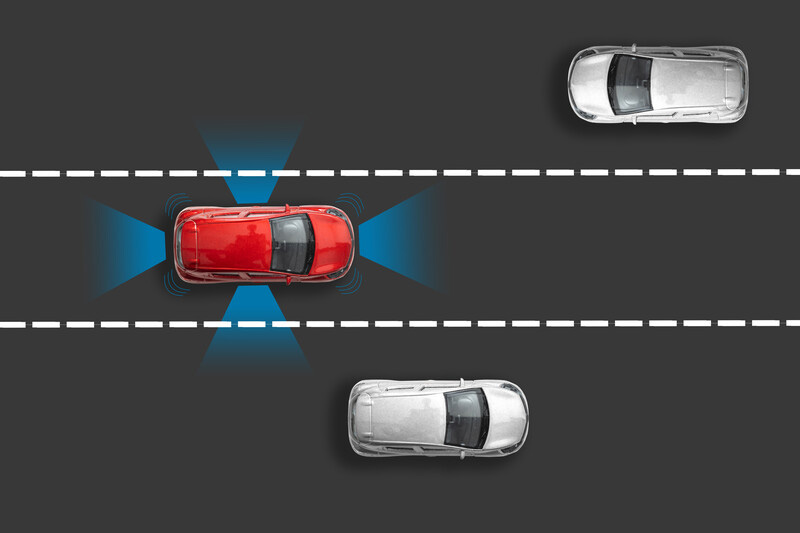
Force Sensors: Force sensors measure the force or pressure applied to them. They find applications in automotive suspension, brake, and weight measurement.
Gyroscopes: Gyroscopes measure angular velocity or orientation changes. Stability control systems, navigation systems, and inertial measurement units use them.
Hall Effect Sensors: detect the presence or absence of a magnetic field. Systems such as speed sensors, position sensors, and anti-lock braking systems utilize them.
Infrared Sensors: Infrared (IR) sensors detect infrared radiation to measure temperature or detect motion. Temperature monitoring, night vision, and motion detection systems apply them.
Magnetic Sensors: Magnetic sensors use magnetic fields to measure proximity and position or detect changes in magnetic fields. Speed-sensing, position-sensing, and compass systems employ them.
Motion Sensors: use radar
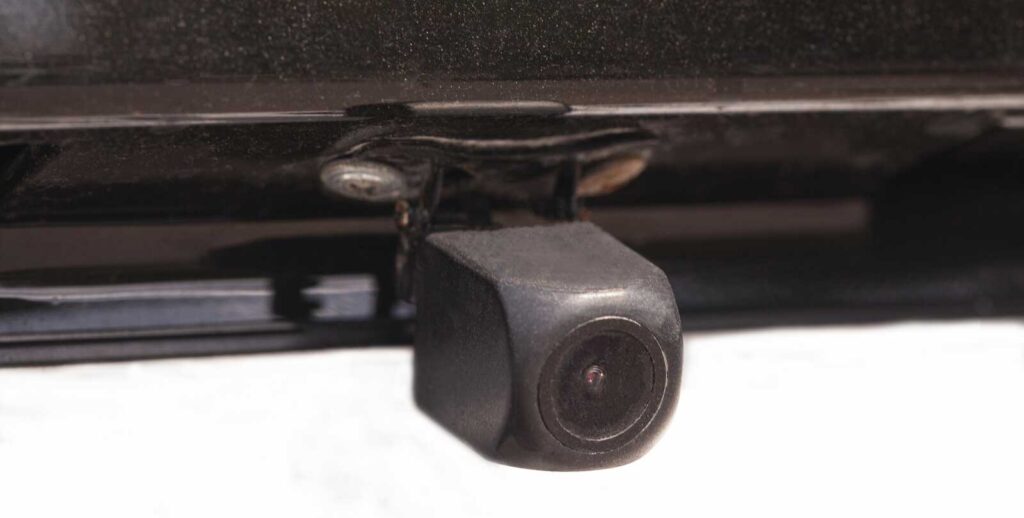
Optical Sensors: Optical sensors use light to measure or detect various parameters. Examples include photodetectors, photodiodes, phototransistors, and light-dependent resistors (LDRs). Applications such as ambient light sensing, optical encoders, and object detection utilize them.
Pressure Sensors: measure the pressure of gases or liquids. Tire pressure monitoring systems, fuel systems, and engine management use them.
Car Proximity Sensors: Proximity sensors detect the presence or absence of objects within a certain range without physical contact. They can use different technologies such as inductive, capacitive, or optical principles. We’ve used Radar and Capacitive
Temperature Sensors: measure temperature. Engine monitoring, climate control systems, and cooling systems utilize them.
Ultrasonic Sensors: emit sound waves at frequencies beyond human hearing to measure distances and detect objects. They frequently find use in parking assist systems and proximity detection applications.
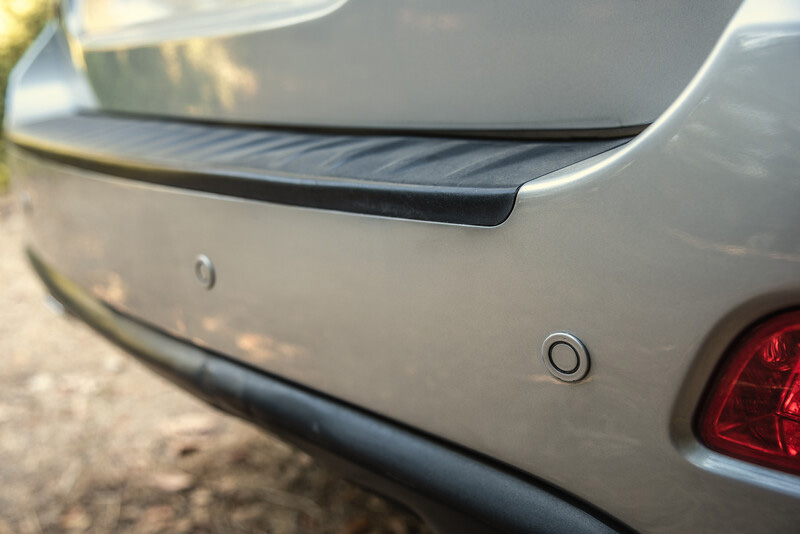
As the automotive industry evolves, these sensors continue to play a critical role in the development of smarter, safer, and more efficient vehicles. At Ascencioné®, we are dedicated to advancing sensor technology and incorporating these innovations into future vehicles. Whether enhancing safety, improving fuel efficiency, or enabling autonomous features, automotive sensors are key to driving the next generation of automotive technology.


